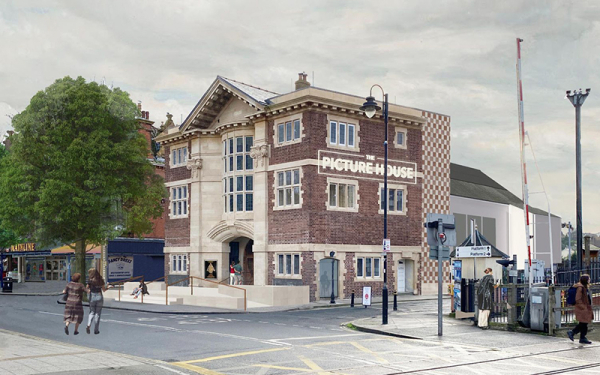Paignton Picture House

Reinventing one of Europe's first purpose-built cinemas.
Full refurbishment of a historic Grade II* listed cinema in Devon, currently in disrepair; which includes fabric upgrades, completely new services provision to modern standards, updating the auditorium and providing heating through an air-source heat pump.
The Paignton Picture House, a Grade II* listed building and one of the UK's earliest purpose-built cinemas, is centrally located in Paignton next to the railway station. Renowned for its historical significance and association with Agatha Christie, who was a frequent visitor, the cinema operated until the early 2000s before closing as a nearby multiplex opened. The restoration has secured over £4 million in funding. It focuses on repairing and upgrading the building's fabric as well as the auditorium; and it also modernises the services with a low-carbon approach.
To enhance thermal performance while preserving the building's historic character and maintaining breathability, several measures have been implemented. These include retrofitting insulation in the auditorium, which offers a valuable opportunity due to its less historically significant fabric compared to the front of the building. Upgrading the auditorium’s walls, roof, and floors will significantly reduce the building’s overall heating demand. In addition, secondary glazing is also being added in the front rooms where possible to further reduce heat loss and enhance comfort.
An air source heat pump will provide low-carbon heating and cooling to the building, and mechanical ventilation with heat recovery will be installed in the auditorium. All systems will feature demand controls to operate only as needed. Low-flow water fittings are being installed, and photovoltaic panels are being added to the east and west-facing roof pitches to generate low-carbon electricity.
Paignton Picture House restoration marries heritage conservation with low-carbon technologies; honouring the building’s storied past whilst securing its future as a vibrant, energy-efficient cultural landmark.




